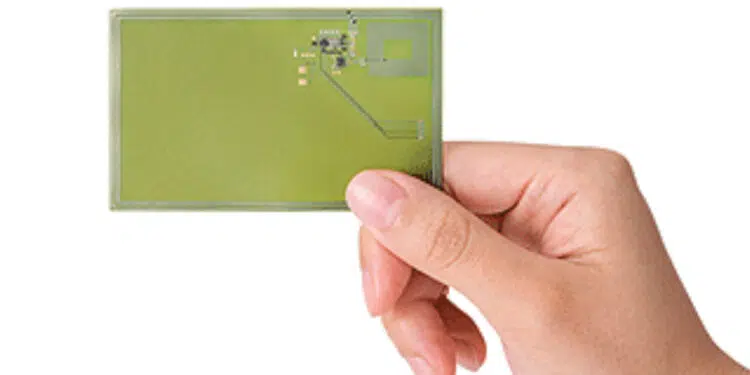Murata Manufacturing has developed a wireless power transfer technology which receives higher power from an NFC reader terminal for electronic cards such as fingerprint authentication cards.
Murata has already started to provide this technology as a technology solution.
In recent years, the need for fingerprint authentication cards has increased against a backdrop of improvements in personal authentication and contactless card security. Fingerprint authentication cards need a power receiving function from the NFC reader to supply power to the fingerprint sensor in the card in addition to a conventional communication function with the NFC reader terminal.
Accordingly, Murata developed this technology to receive higher power from an NFC reader terminal. With this technology, cards can receive 1.7 times power* from an NFC reader terminal compared to typical power transfer technologies. This technology enables a fingerprint authentication card to be used at a distance from NFC reader terminals even if the card is not equipped with a battery and, also helps reduce the time required for fingerprint authentication. This technology is an effective way to achieve not only fingerprint authentication cards, but also electronic cards equipped with display, sensing, communication, and other features.
- *Comparison performed under conditions with the card placed at a distance of 4 cm from the NFC reader terminal. The results may differ depending on card distance and the type of NFC reader terminal.
Going forward, Murata will continue to strive to develop technologies to meet market needs and contribute to the shift to high-functionality and diverse electronic devices.
































